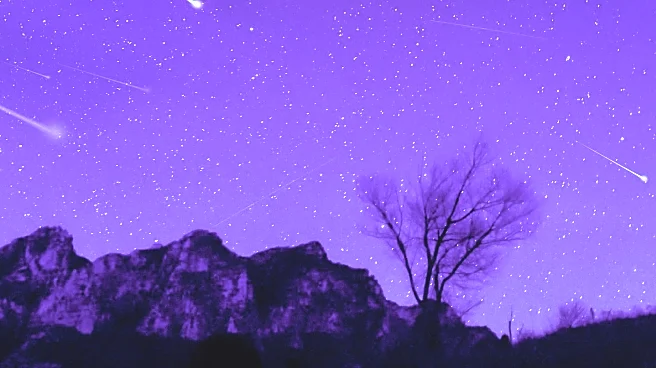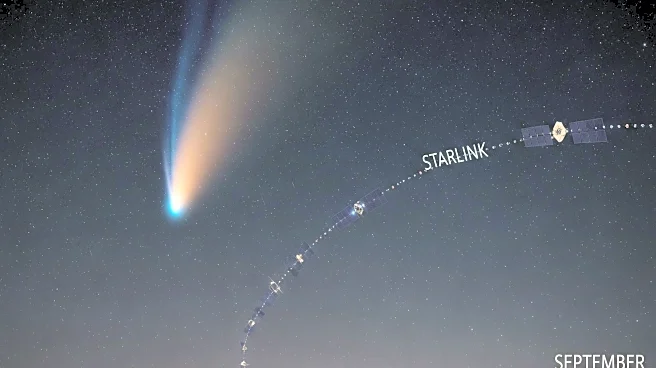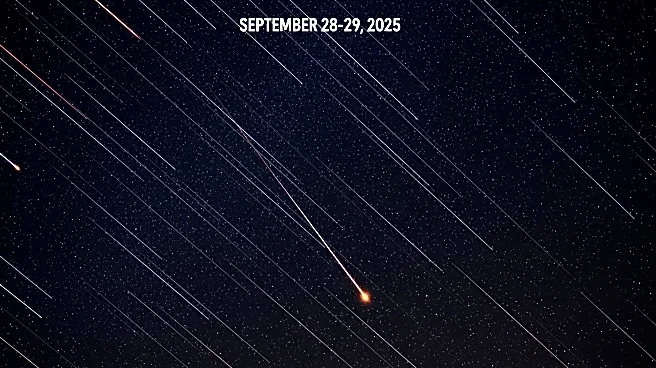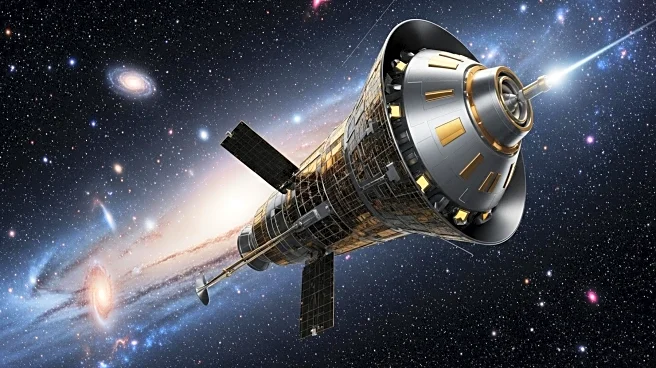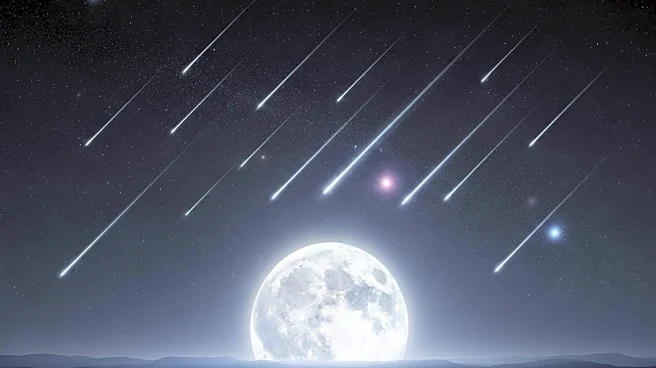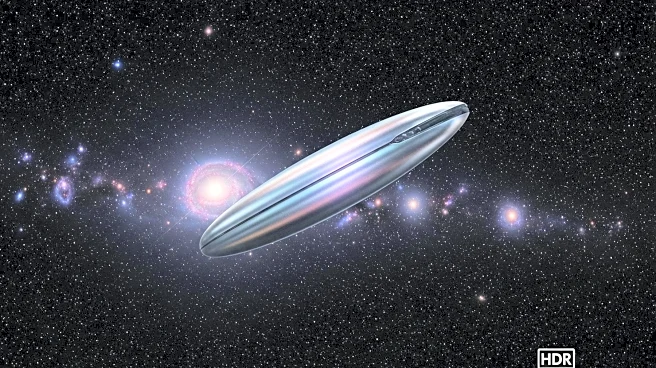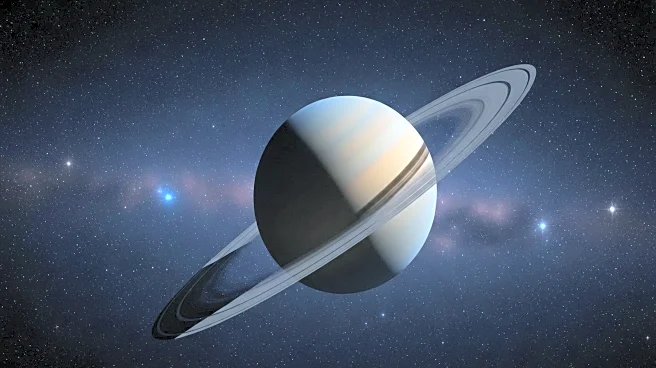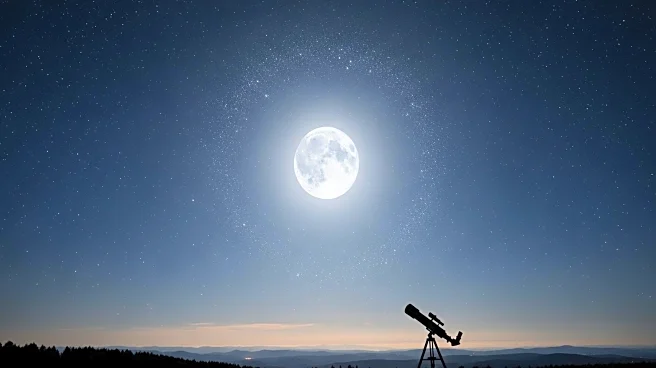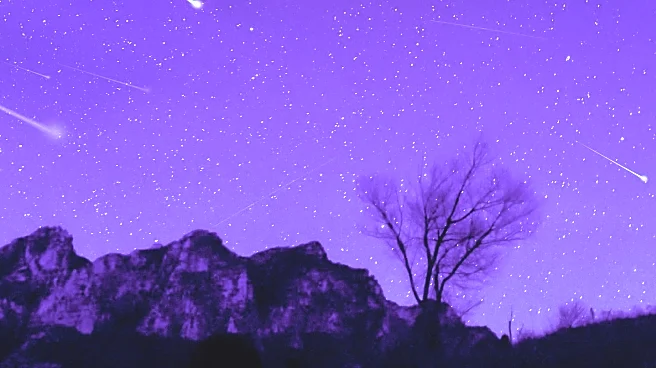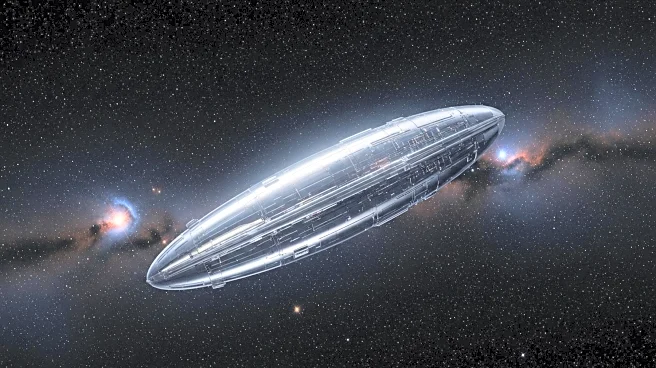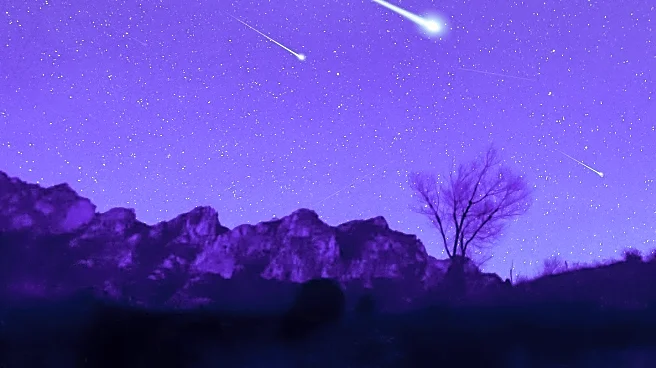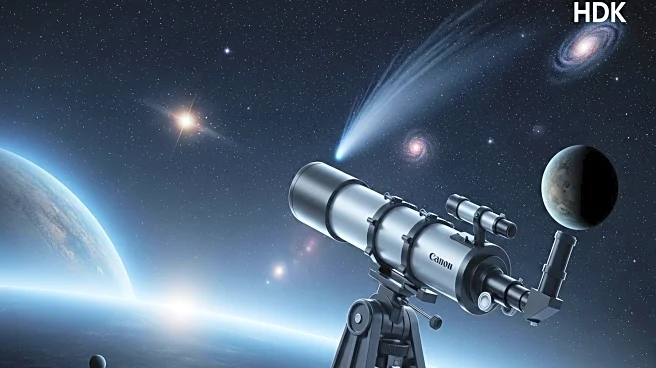What is the story about?
What's Happening?
October offers a celestial treat with six notable night sky events, including a supermoon and two meteor showers. The full supermoon on October 6 will appear larger and brighter, especially during moonrise and moonset. The Draconid meteor shower peaks on October 8, though visibility may be affected by the bright moon. The Orionid meteor shower, peaking on October 20-21, promises a dazzling display as it coincides with a new moon. Other events include the moon's conjunctions with Saturn, Neptune, Jupiter, and Venus, providing ample opportunities for stargazing.
Why It's Important?
These astronomical events offer a unique opportunity for public engagement with science and nature. The visibility of such phenomena can inspire interest in astronomy and encourage people to explore the night sky. For the tourism industry, these events can attract visitors to dark-sky parks and observatories, boosting local economies. Additionally, the events provide educational opportunities for schools and science centers to promote learning about space and the universe.
What's Next?
Stargazers and astronomy enthusiasts are encouraged to plan their viewing activities around these events, taking advantage of clear skies and minimal light pollution. Observatories and science centers may host special events or viewing parties to engage the public. As these events unfold, they may also be documented and shared widely on social media, further increasing public interest and awareness of astronomy.
AI Generated Content
Do you find this article useful?
